
Vadodara, also known as Baroda, is the second largest city in the Indian state of Gujarat. It serves as the administrative headquarters of the Vadodara district and is situated on the banks of the Vishwamitri River, 141 kilometres (88 mi) from the state capital of Gandhinagar. The railway line and National Highway 8, which connect Delhi with Mumbai, pass through Vadodara. The city is named for its abundance of the Banyan (Vad) tree. Vadodara is also locally referred to as the Sanskari Nagari and Kala Nagari of India.
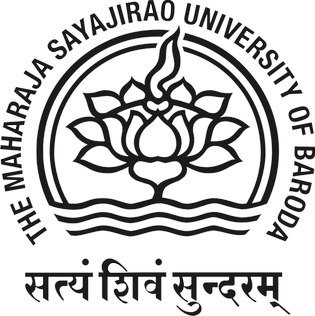
Maharaja Sayajirao University of Baroda, formerly Baroda College, is a public university in the city of Vadodara, Gujarat, India. Originally established as a college in 1881, it became a university in 1949 after India's independence. It was later renamed after its benefactor Maharaja Sayajirao Gaekwad III, the former ruler of Baroda State.

The Gaekwads of Baroda are a Hindu Maratha dynasty origin of the former Maratha Empire and its subsequent Princely States. A dynasty belonging to this clan ruled the princely state of Baroda in western India from the early 18th century until 1947. The ruling prince was known as the Maharaja Gaekwad of Baroda. With the city of Baroda (Vadodara) as its capital, during the British Raj its relations with the British were managed by the Baroda Residency. It was one of the largest and wealthiest princely states existing alongside British India, with wealth coming from the lucrative cotton business as well as rice, wheat and sugar production.

Maharaja Fateh Singh Museum is a museum housed within the Maharaja's palace in Vadodara, India.
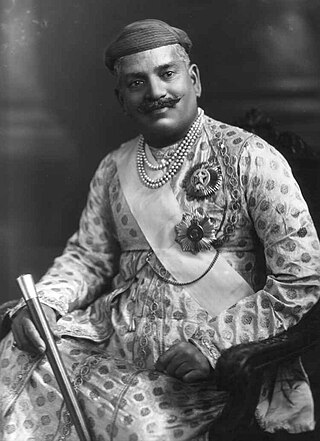
Sayajirao Gaekwad III was the Maharaja of Baroda State from 1875 to 1939, and is remembered for reforming much of his state during his rule. He belonged to the royal Gaekwad dynasty of the Marathas which ruled parts of present-day Gujarat.
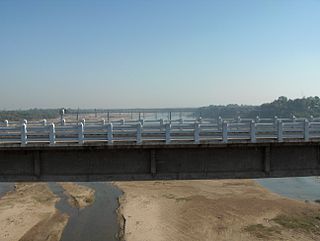
Originating from Pavagadh in the Panchmahal District of Gujarat, the Vishwamitri River flows mainly through the west of the city of Vadodara. The name of this river is said to have been derived from the name of the great saint Vishwamitra. Two other tributaries namely Dhadhar and Khanpur merge into it before it amalgamates with the Gulf of Khambhat. Human settlement dating back to 1000 B.C has been found on the bank of river Vishwamitri which ascertains the existence of Stone Age Era. Also in the beginning of the Christian era, a small township was developed on a mound on the banks of this river which later came to be known as Ankotakka while the mound is popular as Dhantekri. The Vishwamitri River was key to the settlement of Vadodara.
Sayaji Baug is a garden located in Vadodara, Gujarat, India. Also known as "Kamati Baug", it was built by Maharaja Sayaji Rao Gaekwad - a great visionary ruler of Baroda. It is the biggest garden in Western India with the area surrounding more than 100 acres (40 ha).

The "Vadodara Mahanagar Seva Sadan" or Vadodara Municipal Corporation or VMC, established in July 1950 under the Bombay Provincial Corporation Act, 1949, is responsible for the civic infrastructure and administration of the city of Vadodara. Vadodara Municipal Corporation has been formed with functions to improve the infrastructure of town.
The Faculty of Fine Arts, Maharaja Sayajirao University of Baroda is one of the major art colleges in India. It has a reputation for promoting a creative and individualist approach among its students, and has historically adhered to secularist, humanist, and modernist ideals.
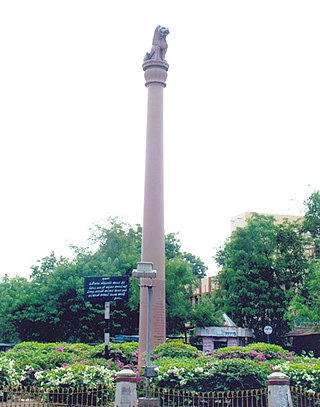
"Kirti Stambh", Tower of Fame/Triumph, is located in the city of Vadodara, Gujarat state, western India.
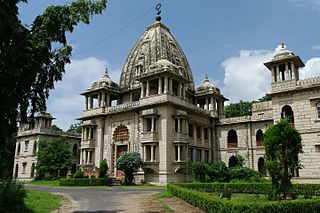
Kirti Mandir, or Temple of Fame, is the cenotaph of the Gaekwads, located in the city of Vadodara.

khanderao market is a famous and palatial building located in the city of Vadodara, Gujarat, in western India. It was erected by Maharaja Sayajirao Gaekwad III in 1906, named after Khande Rao Gaekwad, Maharaja of Baroda (1856–1870). It was presented by him as a gift to the Municipality to mark the Silver Jubilee of his administration. The offices of the Vadodara Municipal Corporation are located in this building. Fresh vegetable and flower market is also located in the back garden.
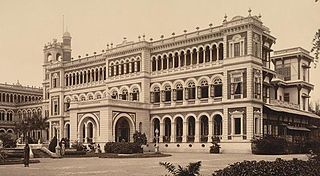
Makarpura Palace was a royal palace of Gaekwads of the Baroda State, in present-day Vadodara, Gujarat, India. It was built by Maharaja Khende Rao in 1870, in the Italian style. It was used as summer residence and hunting resort by the Royal Family.

Shrimant Maharaja Sir Pratap Singh Rao Gaekwad, belonging to the Gaekwad dynasty of the Marathas, was the ruling Maharaja of Baroda. He succeeded to the throne upon the death of his grandfather Sayajirao Gaekwad III in 1939. In 1947, British India was partitioned into two independent dominions, and Pratapsingh acceded his state to the Dominion of India. By 1949, Baroda had been merged into India.

Baroda Management Association (BMA) is an autonomous, professional, non-political and non-profit body based at Vadodara, Gujarat, India. It is affiliated to All India Management Association, Delhi and registered under the Bombay Public Trust Act, 1950. It was founded by leading managers and industrialists on 29 May 1957. In 2012–13, it crossed Rs 1 Crore as revenue. BMA has instituted a national level Sayaji Ratna Award in 2013 to mark the 151st birth anniversary of Maharaja Sayajirao Gaekwad III. The recipients are N R Narayana Murthy, Ratan Tata and Amitabh Bachchan.

Gaekwar's Baroda State Railway (GBSR) or Gaikwad Baroda State Railway was a narrow gauge railway line owned by the Princely State of Baroda, which was ruled by the Gaekwar dynasty.

Baroda State was a state in present-day Gujarat, ruled by the Gaekwad dynasty of the Maratha Confederacy from its formation in 1721 until its accession to the newly formed Dominion of India in 1949. With the city of Baroda (Vadodara) as its capital, during the British Raj its relations with the British were managed by the Baroda Residency. The revenue of the state in 1901 was Rs. 13,661,000. Baroda formally acceded to the Dominion of India, on 1 May 1949, prior to which an interim government was formed in the state.

Shrimant Maharaja Sir Khanderao II Gaekwad, Sena Khas Khel Shamsher Bahadur, GCSI (1828–1870) was the Maharaja of Baroda State from 1856 to 1870.

Chamaraja Road, also known as Chamaraja Wodayar Road is a road in Vadodara, India. It runs east from Lakshmi Vilas Palace at one end to Bhagat Singh Chowk at the other. Known as Maharshi Dayanand Saraswati Rajmarg or Rajmahal Road in the past, the road was renamed back to Chamaraja Road in 2017.
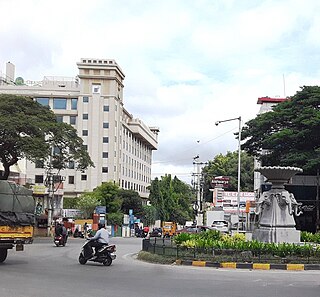
Sayyajirao Road, also known as Sayyaji Rao Road, is a road in Mysore, India stretching in the north from Agrahara circle at one end to Highway circle at the other. This road was named after Maharaja Sayajirao Gaekwad by Maharaja Chamaraja Wodayar X in 1893.

















